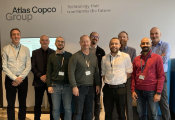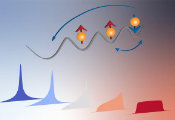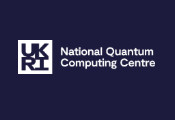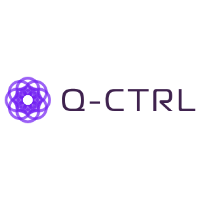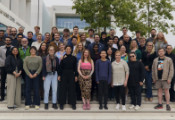NVIDIA and RIKEN Advance Japan’s Scientific Frontiers With New Supercomputers for AI and Quantum Computing
November 17, 2025 -- NVIDIA today announced that RIKEN, Japan’s leading national research institute, is integrating NVIDIA GB200 NVL4 systems with two new supercomputers in Japan — one built for AI for science and the other for quantum computing.
The first system will deploy 1,600 NVIDIA Blackwell GPUs, using the GB200 NVL4 platform and interconnected by NVIDIA Quantum-X800 InfiniBand networking, as part of RIKEN’s AI for science initiative. The system will advance research in areas such as life sciences, materials science, climate and weather forecasting, manufacturing and laboratory automations.
The second system, dedicated to quantum computing, will feature 540 NVIDIA Blackwell GPUs — also using the GB200 NVL4 platform and interconnected by NVIDIA Quantum-X800 InfiniBand networking — to accelerate research in quantum algorithms, hybrid simulation and quantum-classical computing methods.
“RIKEN has long been one of the world’s great scientific institutions, and today it stands at the forefront of a new era in computing,” said Ian Buck, vice president of hyperscale and high-performance computing (HPC) at NVIDIA. “Together, we’re helping Japan build the foundation for sovereign innovation that will drive breakthroughs to solve the world’s most complex scientific and industrial challenges.”
“Integrating the NVIDIA GB200 NVL4 accelerated computing platform with our next-generation supercomputers represents a pivotal advancement for Japan’s science infrastructure,” said Satoshi Matsuoka, director of the RIKEN Center for Computational Science. “Our partnership will create one of the world’s leading unified platforms for AI, quantum and high-performance computing, allowing researchers to unlock and accelerate discoveries in fields ranging from basic sciences to industrial applications for businesses and society.”
Expanding Partnership With RIKEN
The two new RIKEN systems follow the announcement in August that launched a collaboration between Fujitsu and NVIDIA to codesign a flagship supercomputer with the development code name FugakuNEXT, the successor to the world-renowned Fugaku supercomputer. The two new GPU-accelerated supercomputers will also be used as proxy machines — platforms for codesigning and developing various hardware, software and applications for FugakuNEXT.
The FugakuNEXT system is planned to feature FUJITSU-MONAKA-X CPUs, which can be paired with NVIDIA technologies using NVIDIA NVLink Fusion, new silicon enabling high-bandwidth connections between Fujitsu’s CPUs and NVIDIA’s architecture.
FugakuNEXT is expected to deliver 100x greater application performance compared with supercomputers based on CPUs or other existing systems — and will integrate production-level quantum computers in the future.
By combining MONAKA-X and NVIDIA’s latest GPUs, FugakuNEXT will help shape the future of scientific discovery through innovation in HPC, AI, quantum and their combinations.
This growing partnership with RIKEN reflects Japan’s commitment to innovation and NVIDIA’s support in bolstering the country’s computational infrastructure and capabilities in supercomputing and AI for science.
Supercomputing Software Unlocks Scientific Advancements
NVIDIA is already working with RIKEN to develop floating point emulation software that taps into NVIDIA Tensor Core GPU performance for accelerating traditional scientific computing. This technology will allow applications to harness the full power of GPUs for AI and HPC at RIKEN and supercomputing centers worldwide.
RIKEN also plans to use NVIDIA CUDA-X — which provides 400+ highly optimized GPU-accelerated libraries, microservices and tools — to boost its cutting-edge HPC applications with GPU platforms, helping advance AI for science and quantum computing initiatives in Japan.
The two new supercomputers will be operational in spring 2026, while FugakuNEXT is aimed for operation by 2030.





